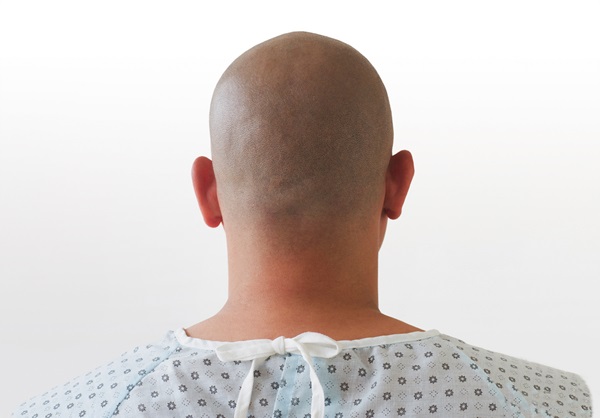
Every lab knows that their colleagues in medicine see turnaround time (TAT) as something almost as important as the quality of test results themselves. In fact, surveys have found that 80% of labs get complaints about TAT. However, TAT can mean much more than just keeping physicians happy.
Reengineering Routine Testing
Even when a test isn't ordered STAT under an emergency situation, sometimes a longer TAT can make a huge difference to patients. K.T. Jerry Yeo, PhD, a professor of pathology and director of clinical chemistry laboratories at the University of Chicago, discovered that patients receiving chemotherapy had to cope with long wait times—in part due to the lab. In fact, oncologists were so frustrated that they started drawing up plans for a new satellite lab just to serve patients receiving chemotherapy.
On the same day patients arrive for a chemotherapy infusion—up to 80 a day—oncologists routinely order complete blood counts (CBC) and comprehensive metabolic panels (CPNL) to discern whether the patient is healthy enough for treatment. Chemotherapy drugs are so toxic that they can destroy red blood cells and damage the liver and kidneys.
When Yeo heard how bad the problem had become, he reached out to the hematology-oncology medical director and offered to fix it. "With more and more patients undergoing chemo, the frustration level of the physicians was rapidly increasing—and patients too," Yeo said.
After studying the problem and tracking the exact path of samples, Yeo's lab team came up with a plan that reduced the median collection-to-result turnaround time for CBCs from 50 minutes to 20, and for CPNLs from 74 minutes to 54.
In the case of CPNL, Yeo knew that it would take no less than 40 minutes on the analyzer to perform 14 assays. So he asked the medical director, "Do you really need 14 tests to decide if the patient gets chemo? What are you looking for?" Yeo explained. This is when he learned a key piece of information: creatinine and bilirubin were the two most time-sensitive tests because they target kidney and liver function. "If you can fast-track those two key tests within the same TAT as the CBCs, we could start the chemo without further delay and catch up with the rest of the CPNL results later," the medical director told Yeo.
Yeo's solution was a new blood gas analyzer that used whole blood and could turn around creatinine and bilirubin results in 2 minutes, one at a time. He set up two new whole blood analyzers in the central processing area of the lab very close to where CBC and CPNL samples arrived by pneumatic tube at a common designated tube station. These samples now are fast-tracked, bypassing the central specimen processing center. They go directly to the adjacent hematology lab and the whole blood analyzers nearby for immediate analyses. This has cut TAT for CBC, whole blood creatinine and bilirubin consistently to a median of 20 minutes from sample collection-to-results. Because of this dramatic TAT improvement, plans for a satellite lab were scrapped.
Learn More at the AACC Annual Meeting Chicago
Real-Time Monitoring
Under pressure to reduce cost, increase efficiency, and improve the quality of services, labs are turning to automation in the hope of doing more with less. However, a high-tech web of tracks, instruments, and robotics can also create problems of its own.
Before Geoffrey Baird, MD, PhD, automated his lab at the University of Washington in Seattle, his team visited several labs to see automation equipment close-up. One of those was Rogue Valley Medical Center in Medford, Oregon, where he first saw a real-time TAT monitor, also known as a pending monitor, in action.
"My medical technologists said, 'look at that pending monitor, we have to have that!'" Baird recalled. "The labs we visited told us the automation system was fine, but it was that pending monitor that made the big difference." Baird is an assistant professor of laboratory medicine and director of Clinical Chemistry at Harborview Medical Center.
Once Baird had his own pending monitor, he discovered just how essential it was. The monitor hangs in an area where medical technologists can easily glance and see the status of each tube. Gathering data from barcode scanners embedded in the automation line, columns on the screen show each test name, location, time in the most recent spot, collection date and time, and patient location. The screen also broadcasts alerts; for example, flashing red when a sample reaches a 100-minute threshold.
One reason Baird's staff loves the pending monitor is because it saves time and effort by eliminating long searches for lost tubes. "Back when we were printing out pending logs, someone had to go around with a piece of paper hunting tubes, not really knowing where its last location was," said he explained. "Now you can just look up at the monitor, see the name and location, and go find it."
A pending monitor will be an essential tool for any highly automated labs that also use computerized physician order entry, according to Baird. "If you are logging tubes and generating bar codes at the point-of-draw, a person may never touch it again after the phlebotomist. At that point it becomes incredibly important to have a technology that tracks where things are."